7European smoketree
Cotinus coggygria
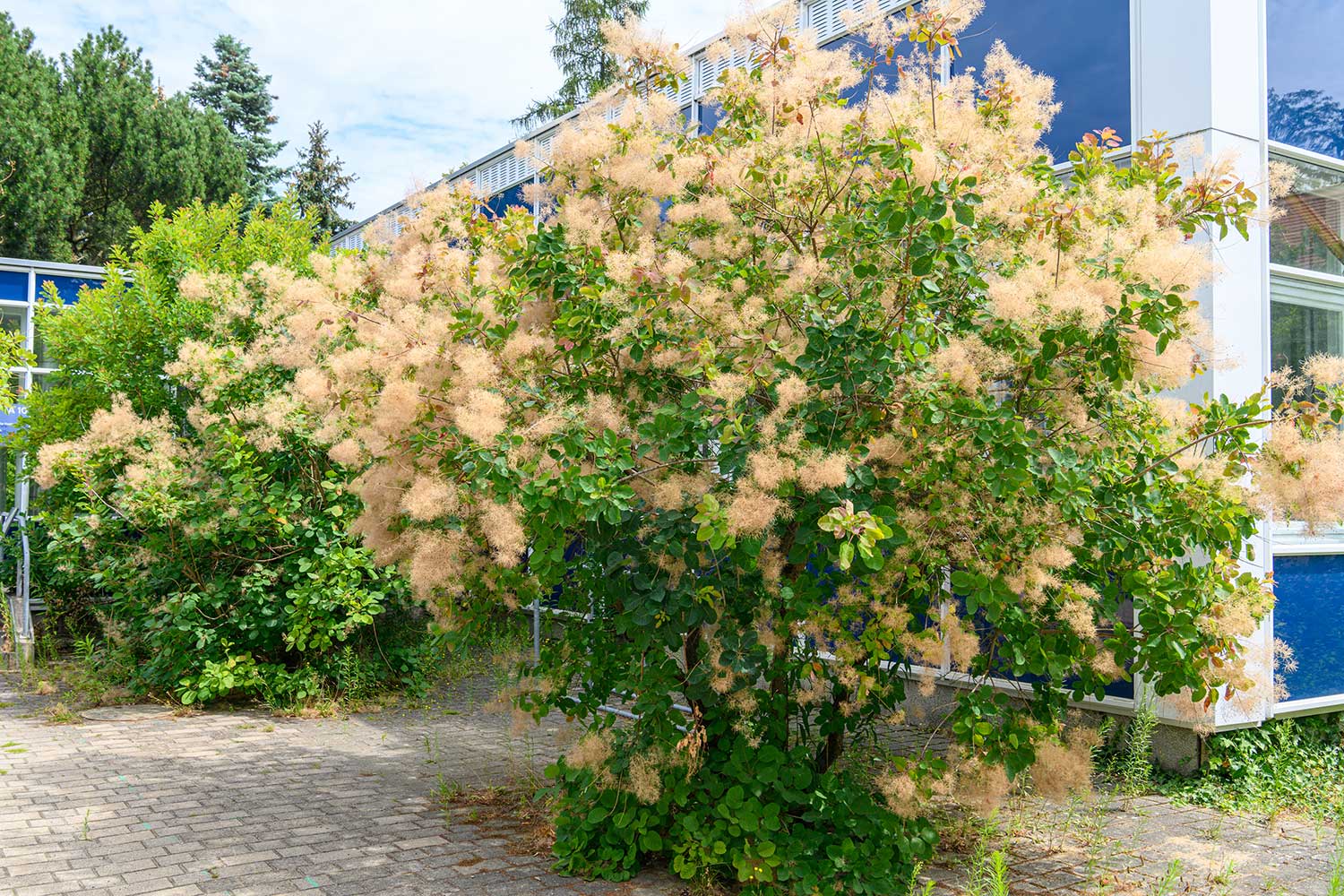
In front of the entrance to the library is the seventh plant on the tour: a European smoketree, also called dyer's sumac, botanical name Cotinus coggygria from the sumac or acai family or Anacardiaceae.
Its botanical name, Cotinus, is derived from the Greek word "kótinos," which can be translated as "wild olive tree." Coggygria refers to the color of the flowers and means scarlet. The family name Acaju also indicates that it is related to the cashew.
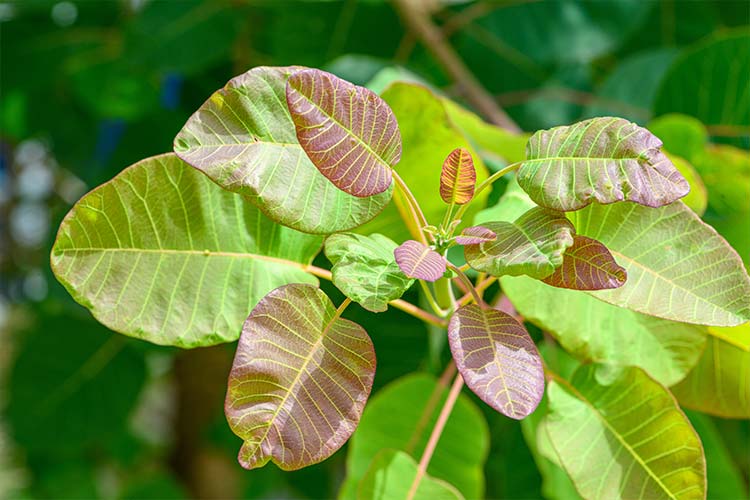
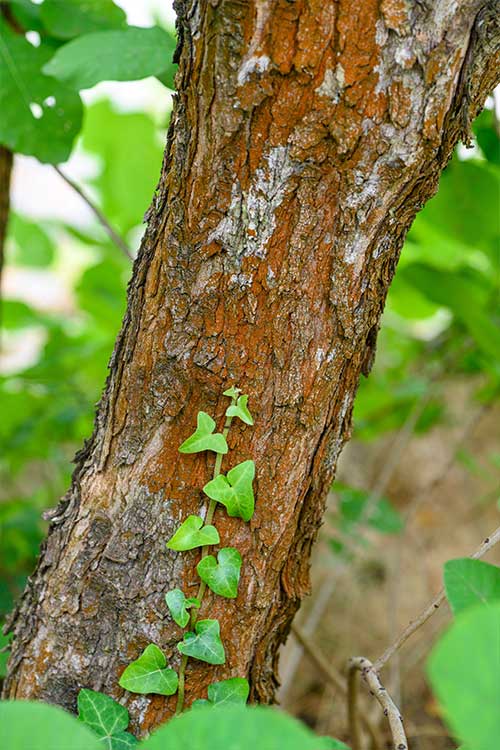
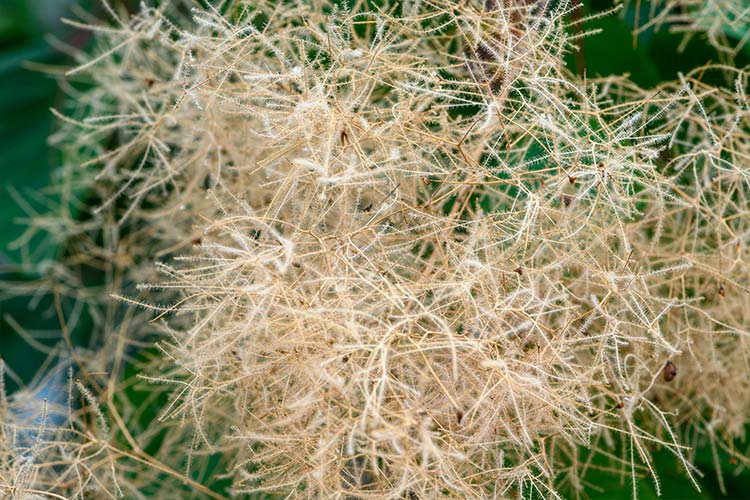
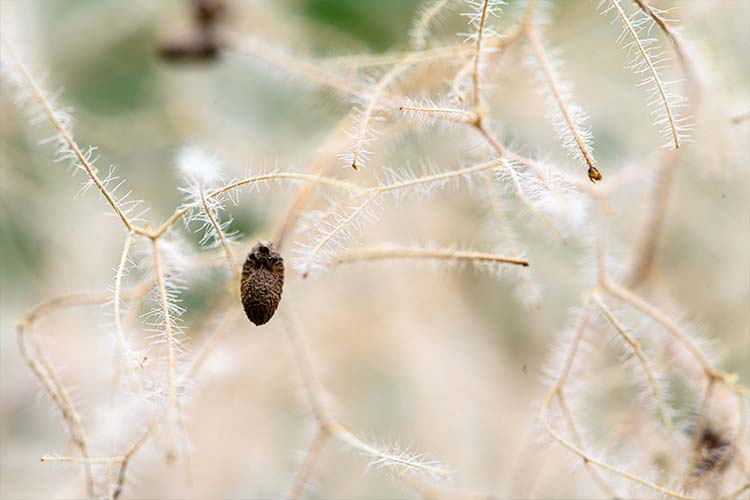
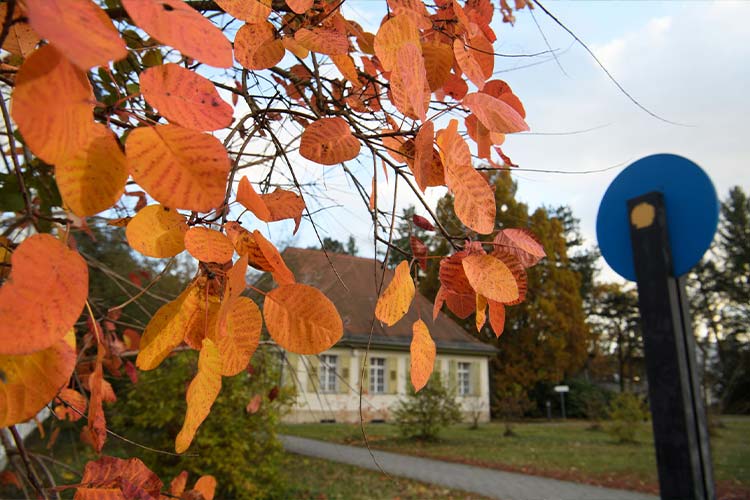

European smoketrees are deciduous, medium-sized, broad-bush shrubs with drooping branches. They grow about three to five meters tall and just as wide. The bark is gray-brownish and furrowed-scaly, with narrow stripes.
Their leaves are alternate and turn yellow-orange to red in the fall. Even more beautiful are the yellow-green flowers, which also give the shrub its German name "wig shrub (Perückenstrauch). Between June and July, the flower styles grow up to 20 centimeters. They may form small drupes until October, which are usually spread by the wind. Or they can remain without fruit and form numerous, long, protruding, whitish-yellow to pinkish-red hairs. This leads to the name wig shrub, because then it looks as if the shrub is wearing a wig.
European smoketrees are considered relatively undemanding, but tend to prefer nutrient-rich, well-drained, calcareous soils that are stony to rocky, as well as sunny and dry locations.
The European smoketree is native to the Mediterranean region and southern Europe, as well as Asia Minor and large parts of southwest Asia. In China and Nepal, this species thrives at altitudes of up to 2400 meters.
The name dyer's sumac already suggests some uses: foliage leaves and especially the wood are used for tanning and black dyeing. The reason for this has to do with tannins, tannin glycosides such as fustin, and flavonoids such as fisetin. The plant was formerly used as a dye for silk and wool, as well as for the production of fisetin. The latter substance is said to have so-called senolytic effects, which means it can delay or alleviate age-related diseases. However, there have not yet been any conclusive studies to support this claim.
The leaves and bark are a good source of tannins, essential oils such as camphene, linalool and others. They can be used to produce odorants and flavorings. In a Russian traditional remedy, the leaves are used to treat burns and poisoning.